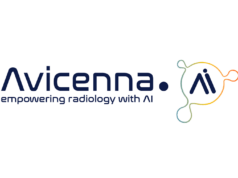 Avicenna.AI has today announced a distribution agreement with CARPL.ai—a company providing a technology platform that enables service-provider-oriented testing, validation and deployment of artificial intelligence (AI) applications to healthcare providers.
Avicenna.AI has today announced a distribution agreement with CARPL.ai—a company providing a technology platform that enables service-provider-oriented testing, validation and deployment of artificial intelligence (AI) applications to healthcare providers.
As part of this agreement, the CARPL platform now includes Avicenna’s range of CINA solutions for neurovascular and thoraco-abdominal pathologies, which use deep learning to identify, detect and quantify life-threatening pathologies from computed tomography (CT) medical images. These US Food and Drug Administration (FDA)-cleared and CE-marked tools are “seamlessly integrated” within the clinical workflow, automatically triggering and reporting algorithm results through the systems already used by radiologists, an Avicenna.AI press release notes.
Using a combination of deep learning and machine learning technologies, the CINA solutions automatically detect and prioritise cases within seconds, and—the release adds—assess them for severity, seamlessly alerting radiologists within their existing systems and workflow.
“CARPL.ai specialises in driving the adoption of radiology AI solutions into clinical workflows, and improves patient outcomes, by enabling and empowering healthcare service providers to discover, explore and validate cutting-edge AI, and then deploy it in their environment with confidence,” said Vidur Mahajan, CEO of CARPL.ai. “When it comes to stroke care and other life-threatening conditions, we are delighted to now be able to offer Avicenna’s portfolio as a comprehensive solution to our customers.”
“We are excited to partner with a leading platform like CARPL, which has a strong presence in key new markets for us, including Australia, Brazil and India,” added Cyril Di Grandi, co-founder and CEO of Avicenna.AI. “They are also deployed in many large hospital environments, which is exactly what our solutions are designed for—delivering faster detection of critical conditions, improving radiology efficiency and supporting better patient outcomes.”













